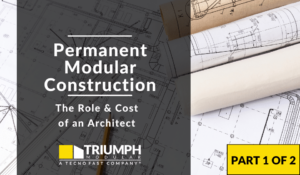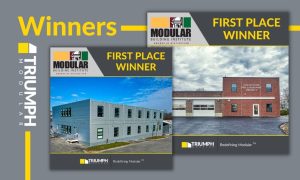Modular Homes
I recently visited modular factories in New Hampshire and Maine. Each had been in business for a long time and has built many of New England’s most impressive modular homes. These homes demonstrate the benefits of factory production as a catalyst for speed, without limiting design, elegance, or quality. As a construction manager who oversees the design and installation of commercial modular buildings such as office buildings, labs, schools, libraries, and daycare centers, our focus has not been on the residential side of the market.
However, after completing our LEED Gold Acton project (pictured) we are visiting factories to determine if they were a good fit to partner on our next multi-family modular building opportunity in the Boston area. Clearly, multi-family is within the experience and expertise of both the factories we toured.
What I found “blog-worthy” is the differences between the residential modular approach and the commercial modular factories, which I have visited in Pennsylvania and Indiana. In fact, each could improve by learning from the other. In general, residential factories could learn some lessons from the automation of commercial factory production. This would improve their ability to move more assembly through the plant quickly. There is a fine line here – as neither the commercial or residential modular builder wants to create a “cookie-cutter” result. With that said, modular factories need to utilize economies of scale and some repetition in order to add value to the market. It would be nice to see greater capacity in general for large-scale modular component builders in New England. Those we do work with are excellent people but given a lack of capacity, I believe we fail to work with each other as closely as we might.
Residential Modular Architecture
On the positive side, residential modular factories are experts at dressing up modular buildings, with pitched roofs, dormers, etc. If they move too slowly through the factory, I wonder if they will maintain a competitive edge in the residential home marketplace. The result is mansions that once fully assembled on the site, nobody would suspect that the building was a “modular” structure. In fact, they are quite remarkable! Residential modular builders have been setting the tone for modular architecture for many years, building very high-end beautiful homes in some of the wealthiest areas of residential real estate in the country such as Fairfield County Connecticut, and the suburbs of New York City. They may move a little more slowly in order to complete each custom specification of their private clients, but the results demonstrate clearly that modular architecture is inspiring, and that factory production assists greatly to speed the process along, not limiting the design in any way. We hope to maintain a position of communication with the thought leaders in these great factories and help them in any way we can, so we both can be rewarded with successful projects, under budget with happy owners.





